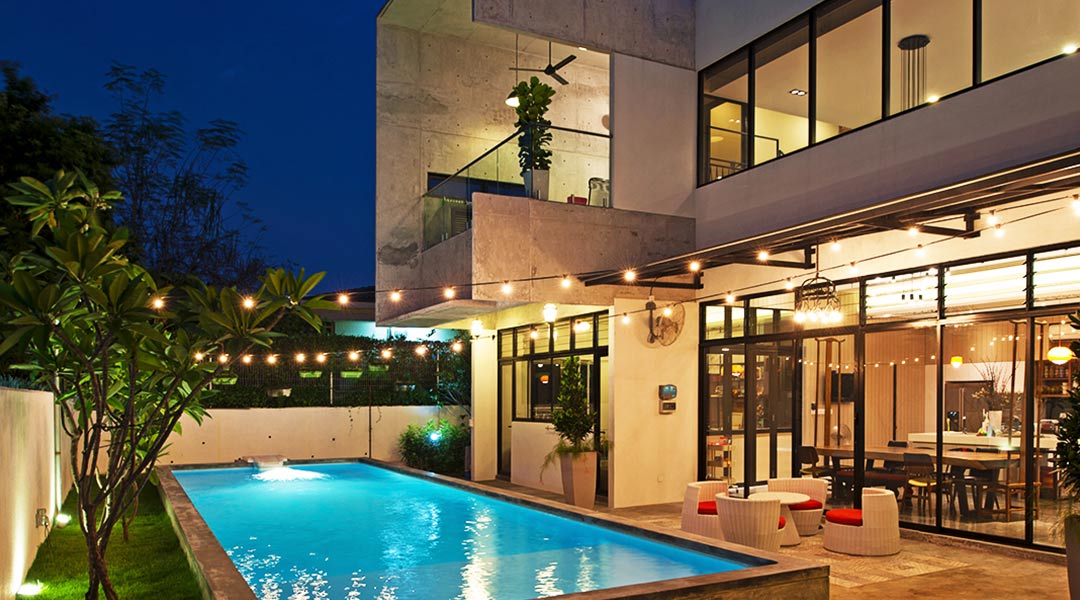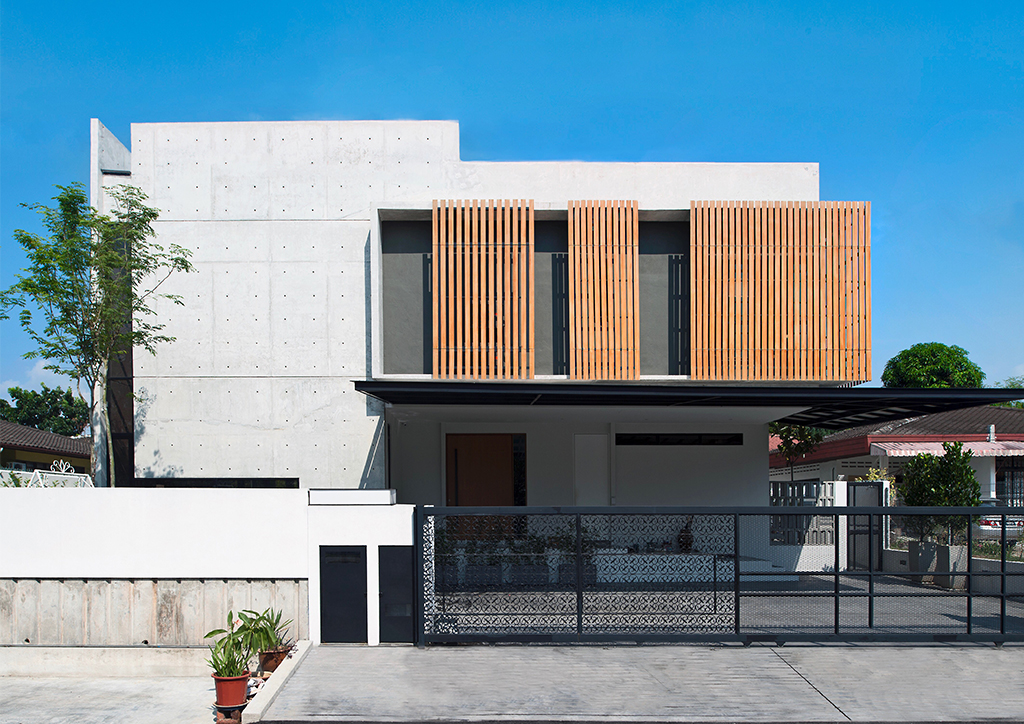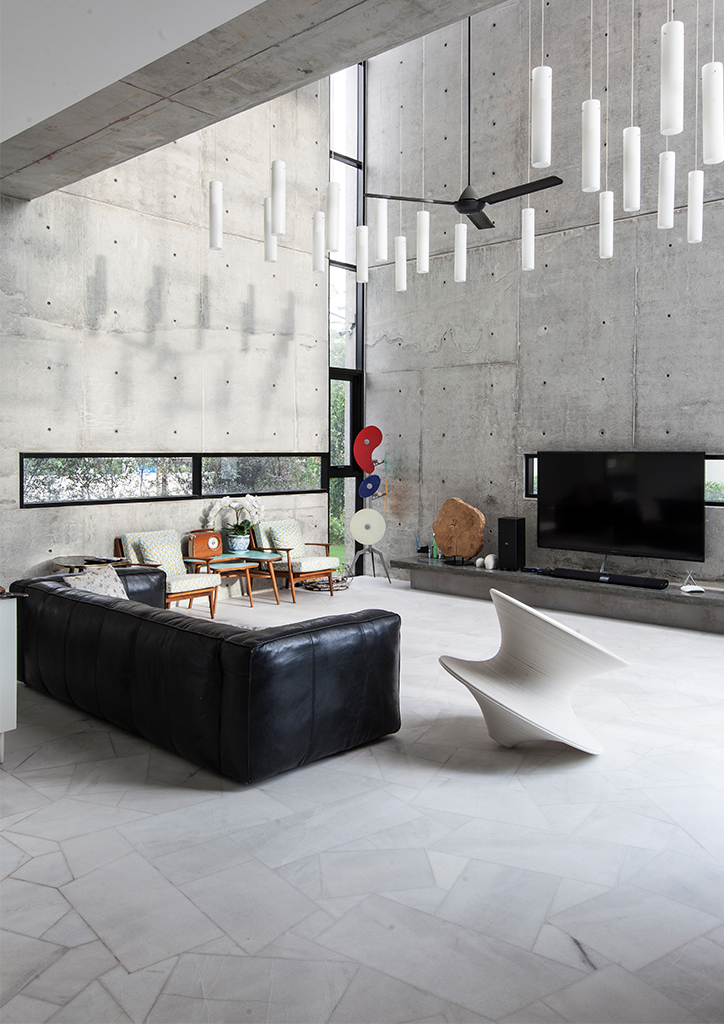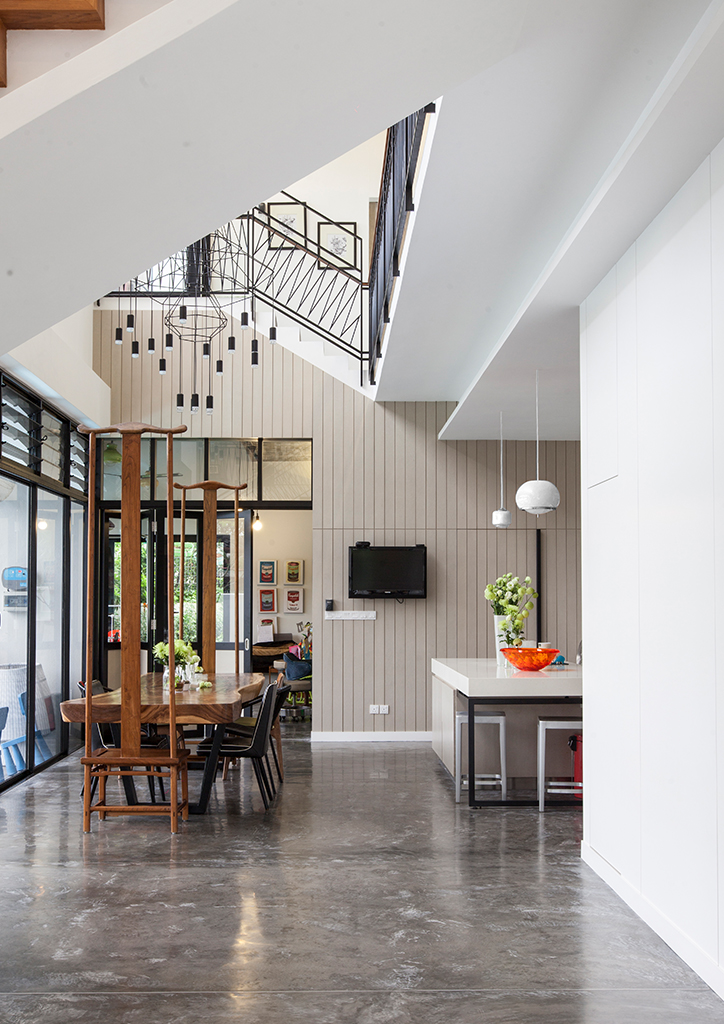
Seshan Design fulfills the needs of a multigenerational household
The house Seshan Design has crafted is a two-storey concrete box in a street of aging, clay tile-roofed bungalows, an outlier in one of the older residential suburbs of Petaling Jaya, Malaysia. The west-facing front façade is a rectilinear composition finished in fair-faced concrete and plaster. In the north corner, a young tree shades a tall and slender living room window. Meanwhile, in the south corner, brise soleil screen two second-floor bedroom windows from public view. Concrete was the young homeowner’s material of choice for the house from the very beginning. Involved in the construction industry, he appreciated the honesty of raw concrete and was aware of its reputation as a low maintenance material with high thermal mass properties.

Presented with a detailed brief and a 687-square-meter lot, the Malaysian boutique architecture and interior design studio Seshan Design quickly got to work. A couple of things worked in their favor: the lot had no pre-existing vegetation to preserve and presented no challenges topographically. The neighbors were predominantly bungalows, allowing the unhindered passage of breezes and daylight. The client’s budget limited structural acrobatics to a minimum and necessitated the use of affordable materials like plaster, clay bricks, and even broken marble into the mix to temper the concrete, which the studio found too inhospitable a material for the dwelling of a young family. Careful collaboration with the homeowners and contractors enabled the studio to execute the project, from the demolition of a decrepit house on the lot to moving in, in a speedy 14 months.

Seshan Design concentrated the use of light in the living and dining areas, both of which are immediately visible upon entry. These spaces are the most used parts of the home and naturally consume the most energy. The 7-meter-high ceilings keep the heat away from occupants by allowing hot air more room to rise and make the modest 480-square -meter footprint of the house feel roomier. Light enters the house by way of expansive glazing facing the house’s eastern side, which opens up to a long swimming pool and unimpeded views of the neighborhood.

Sliding doors to the pool and operable windows facilitate cross ventilation in the living area. Additional exhaust is provided by an operable window situated higher up on the double-height volume. The placement of the pool parallel to the dining area ensures the breezes are cooled before they enter the sliding doors bordering the 7-meter-long room. Jalousie transoms atop the sliding doors function like the ornamented air vents of traditional Malaysian kampong house, allowing the space to breathe event the doors are shut. The use of jalousie transoms was likewise adopted in the ground floor study room and parents’ quarters, and second floor bedrooms. Proof of the owner’s dependence on passive cooling is that he opted to install just one air-conditioning unit (one he rarely uses) for the open-plan spaces of the ground floor.

The owner made the best of the well-lit ground floor by treating the spaces like galleries, with anchor pieces distributed among the rooms. The living room’s centerpiece is a set of cascading ceiling lights that emphasize its height, whilst the dining room’s verticality is reinforced with 2.7-meter tall timber chairs bookending the set. The second floor hold the majority of the household’s bedrooms and a few other creature comforts. The master bath contains one of the owner’s favorite amenities, a glass-enclosed shower area with a freestanding tub as the centerpiece. What makes the set-up noteworthy is that is faces a large window oriented towards the street, a playful gesture by the owner. For privacy, a brise soleil of vertically cut cement fiberboard strips painted to resemble wood shields the window. Another favorite hangout spot is the cantilevering concrete box in the southeastern end of the house, its most dramatic design gesture. It houses a lanai and a home theater divided by metal shutters, much like old shophouses of Malaysia.
Living in the house for a year, the homeowner has little to complain about. His growing boys love to run around the house and garden, while his elderly parents appreciate the openness and free access to daylight. ![]()
This article first appeared in ‘Tropical Architecture in the 21st Century Volume 1’ book. Edits were made for BluPrint online.
Photographed by Ed Simon
READ MORE: The simplicity of tropical living in the Garden State


